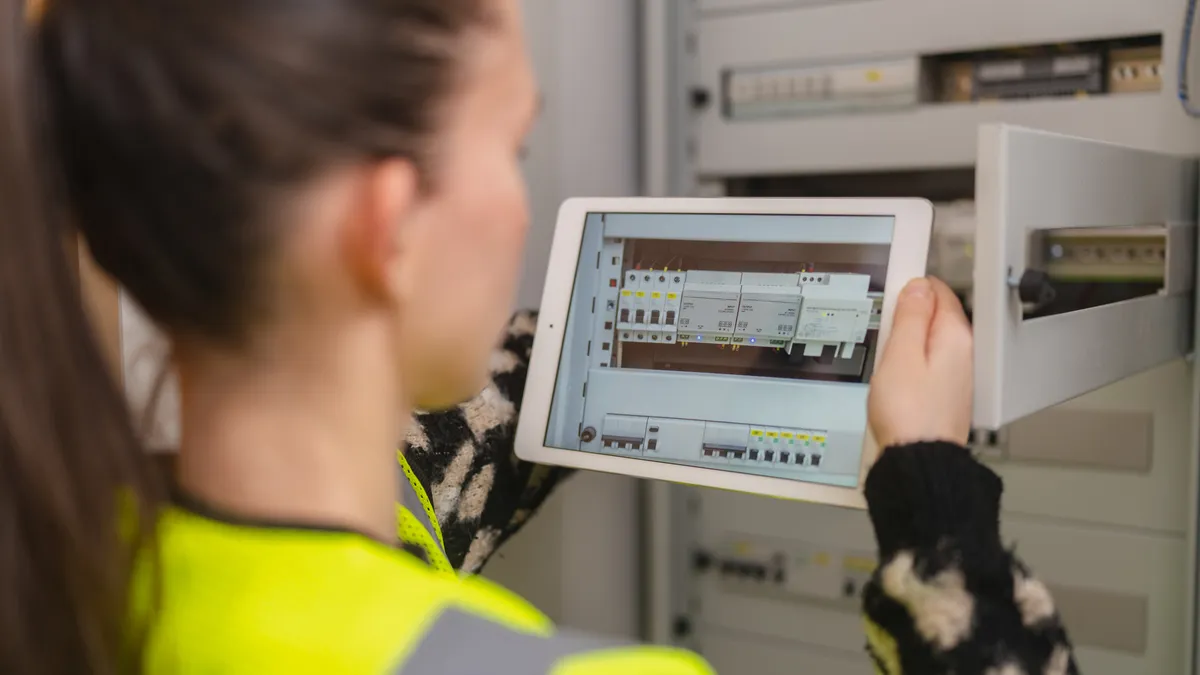Ben Hertz-Shargel is global head of grid edge at Wood Mackenzie.
With the wave of residential electrification well underway, the idea of a smart electrical panel seems like a no-brainer. The electrical panel is the nerve center of the home, where demand from heat pumps, EV chargers and electric cooktops meet. Surely a company can do for that forgotten device what Nest did for the thermostat, turning it into an indispensable smart device for home energy management.
We recently completed an analysis of the value proposition, product and commercial landscape, and alternatives to smart panels in order to test this hypothesis. Our somewhat-counterintuitive conclusion is that the long-term prospects of smart panels are dim unless they are significantly stripped of cost and functionality.
To begin, it is important to understand that smart panels offer less of a value proposition than they do a cost avoidance proposition. By monitoring and, when necessary, curtailing a home's electricity demand they enable customers with 100-amp utility service to avoid a costly upgrade when electrifying their home. This is much more of an issue for customers installing EV chargers and electric cooktops than heat pumps and heat pump water heaters. Similarly, for customers who install a home battery for backup power, a smart panel can ensure that only prioritized devices operate during a power outage, reducing the need to invest in a second battery.
But the way smart panels achieve this load management is problematic. Rather that communicating with a device, they open the breaker to the circuit that the device is on, abruptly cutting the power. Intuitively, this is not a great idea. Cutting the power to motor-based devices like heat pumps, dishwashers and pool pumps can damage them. And even vendors who skirt this issue by detecting motor duty cycles and cutting the power in between them can leave customers with blinking lights, reset clocks and soapy laundry. A positive customer experience demands that devices gracefully respond to and recover from load management — that their own user interfaces be in the loop. And that means device API integrations, not de-energizing circuits.
But smart circuit breakers are presumably the major driver behind smart panels’ hefty price tags, which typically exceed $3,000. Their only other major hardware capability is real-time circuit-level monitoring, and retrofit devices today offer this for under $200. That means that a modest upgrade to a convention panel, paired with API integrations, could match — and in fact exceed — the capabilities and user experience of a smart panel, at a fraction of the cost.
There are two challenges to this argument. The first is that a software-based solution will not enable customers to avoid a utility service upgrade. In fact, recent revisions to the National Electric Code, or NEC, allow software-based load management solutions to manage EV charging demand in place of upgrading service. And UL, the standards body that the NEC defers to on safety-related issues, is working on a new load management standard under which, according to early indication, software solutions will enable service upgrade avoidance more generally.
The second challenge to the argument is that generous federal and local incentives, along with energy efficiency opportunities, reduce the cost of smart panels enough to make them attractive to homeowners. Under the Inflation Reduction Act’s 25C and 25D tax credit provisions, customers will get up to a $600 credit when installing a smart panel with a heat pump, and around $1,000 when installing with solar or storage. Once states begin rolling out programs under the IRA’s High-Efficiency Electric Home Rebate Act, customers in participating states will see point-of-sale rebates of half of the price of a smart panel, as well as a tax credit closer to $500 when installing with a heat pump, solar or storage.
But our analysis of pre-IRA tax returns shows that less than 3% of customers making tax credit-eligible energy efficiency investments, including heat pumps and water heaters, actually claim those credits on their taxes. That suggests that unlike solar and storage, energy efficiency tax credits may not be such a strong sales driver. Moreover, a long-running energy efficiency study at Alliant Energy found that only 40% of customers who benefited from granular home energy monitoring were willing even to share the cost of a several-hundred-dollar energy management device. Now imagine asking customers to pay $1,000-$2,000 post-incentive. Getting people to pay money to save money is always a tough sell.
This brings us to a bigger point. While the pace has been slow and uneven, the deployment of smart meters is inevitable. And the second-generation meters being rolled out today, broadly referred to as “AMI 2.0”, have game-changing sensing, computing and networking capabilities. Will we truly require a second piece of expensive, energy-related hardware in the home? And unlike the case of AMI, which utilities happily purchase and rate base, will homeowners be willing to pay for it?
Consider that AMI 2.0 vendors today, including Landis+Gyr and Itron, are positioning their hardware not simply as meters but as platforms for third-party energy applications. Both have partnered with Sense to host its disaggregation software onboard the meter, enabling real-time device-level energy monitoring that goes right to your phone. It turns out that measuring whole-home load thousands of times per second enables good, but not perfect device-level accuracy. But pairing that meter data with real-time device data from smart thermostats, EV chargers and other DERs — data which these devices communicate today — will enable the accuracy needed for load management. And as a backstop, remember that a $200 investment in conventional, “dumb” panels would provide circuit-level metering, which guarantees accuracy.
Now imagine smart meters hosting not only disaggregation apps but apps that are integrated with major DER and appliance brands, enabling graceful demand management. Such integrations are pervasive in utility DER management today: they simply need to be implemented by AMI providers or their partners. This is a compelling vision for the future of home energy management, matching the functionality of a smart panel but with a superior customer experience — and, crucially, without relying on a second piece of expensive hardware.
Where does that leave the electrical panel? Mostly unchanged, but perhaps with circuit-level monitoring and a Wi-Fi radio, enabling it to transmit readings to a smart meter. Not as transformational as the picture many today will paint, but right-sized for the role that customers should be asked to pay for.






















